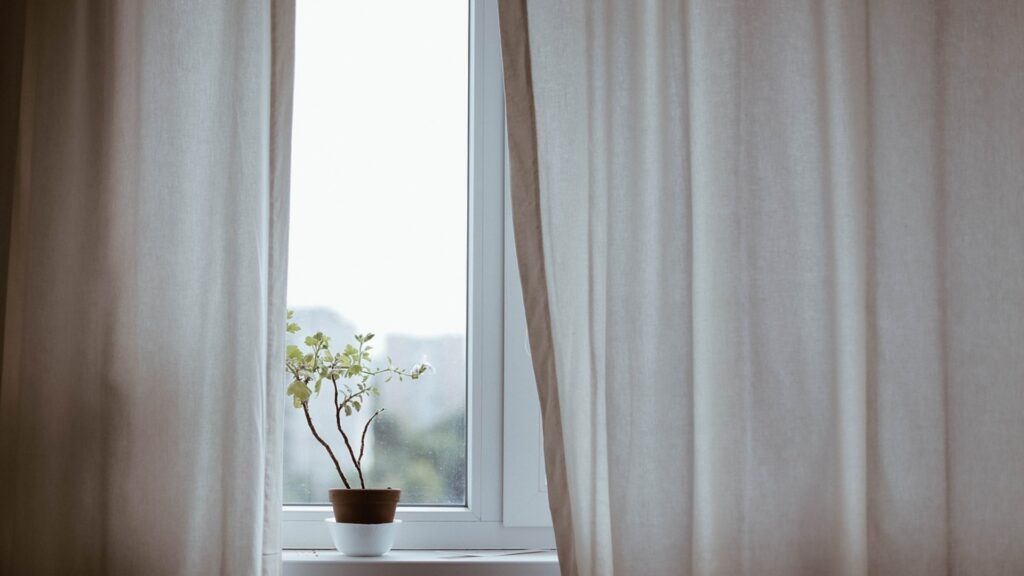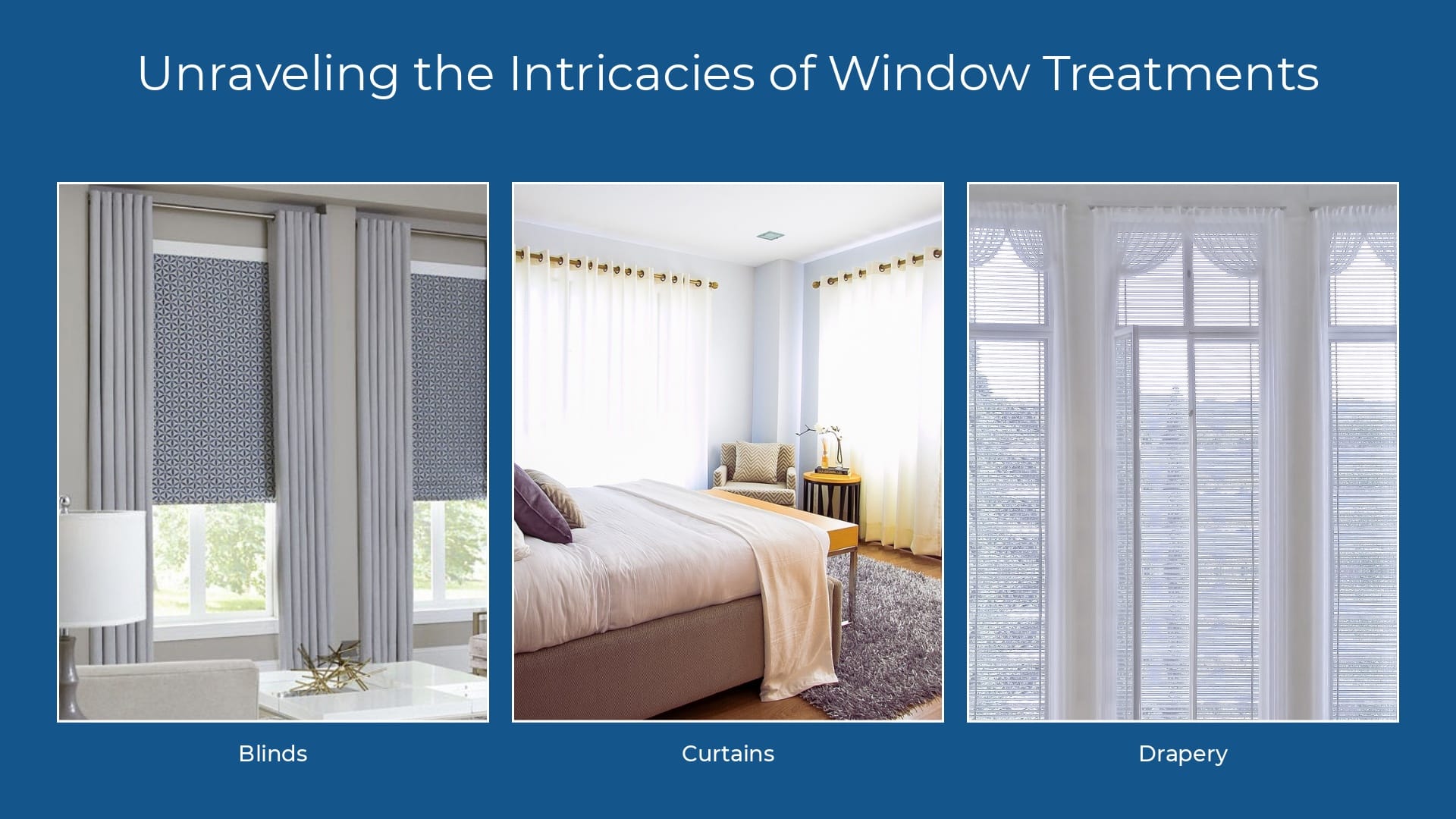Last Updated on May 15, 2023 by Pro Handyman Editorial Team
A Comprehensive Guide to Selecting Blinds, Curtains, or Drapery
Discover the unique features of popular window treatments like blinds, curtains, and drapery. Our expert panel breaks down the strengths and weaknesses of each and offers guidance on the ideal usage in your home.
Unraveling the Intricacies of Window Treatments
While the selection of window treatments might seem like a minor detail in home design, your choices can significantly impact your home’s overall aesthetic and ambiance. It’s easy to get lost in the labyrinth of terms—blinds, curtains, and drapery—but understanding the subtle differences between these options can dramatically enhance the atmosphere of your living spaces.
The primary distinguishing factors boil down to two aspects: light control and aesthetics. As we delve into the specifics, you’ll learn how each type of window treatment can transform any room.
Blinds: The Epitome of Light Control
Blinds are rigid window treatments made of slats or vanes that tumble down or over a window or sliding door. They’re bound together in a stacked configuration, operated by drawcords either manually or via motorization. This design allows for excellent privacy control and sunlight regulation.
The prime advantage of blinds is their superb control over daylight glare. However, while effectively regulating light, they may only provide partial blackout. If a complete light blockage is desired, consider pairing blinds with drapery.

Curtains: The Versatile Soft Window Coverings
Unlike their sturdier counterpart, curtains are soft window coverings designed from lightweight or even translucent materials. Their primary role is to shield against sunlight and drafts, bringing a unique charm to any space.
One of the outstanding advantages of curtains is their versatility. From dressing a window in a café to adding elegance to a full-length living room window, curtains can do it all. However, due to their lightweight nature, they don’t offer as much light control. Combine curtains with blinds or shades to overcome this for a comprehensive window solution.
Drapery: The Classic and Elegant Window Solution
Drapery, though similar to curtains, is typically crafted from heavier fabrics like damask, silk, or velvet. These fabric panels are lined with a cloth of varying weight for light and temperature control, resulting in a formal aesthetic that adds a sophisticated dimension to any window.
Drapery is the go-to option for entirely blocking light exposure, providing privacy, and insulating interiors from temperature variations. However, crafting this window treatment requires a skilled professional due to the need for precise measurements, architectural considerations, and functionality parameters.
Deciding on the Ideal Window Treatment for Each Space
The right window treatment can enhance any space. With their clean lines and efficient light control, blinds are a practical choice for areas prone to clutter. In addition, they can bring natural elements into the home and add a touch of sophistication to any window.
Drapery, however, is best suited for spaces that demand a higher level of sophistication. They beautifully enhance the surrounding architecture, adding a visually compelling and slightly romantic interest to the interior furnishings.
With their lightweight material, Curtains are often used to soften a space. As a result, they’re an excellent choice for kitchens, children’s rooms, and other casual areas that aim to add a tasteful finish to home décor.

The Definitive Guide to Window Curtains and Drapes
Window curtains and drapes are the crowning glory that lends a room its finished look. Whether it’s the subtle elegance of white linen curtains or the rich exuberance of patterned drapes, your window treatments can transform your space. Alongside selecting the perfect fabric, color, and design, the art of curtain hanging is an equally critical aspect of dressing your windows. This guide will give you valuable tips and techniques to ensure your window curtains enhance your room’s aesthetic appeal and functionality.
Positioning the Curtain Rod: Height Matters
The position of the curtain rod significantly impacts the overall look of your window treatments. Always hang the rod high to infuse your room with a sense of height and grandeur. Ideally, place the rod 4-6 inches above the window frame or 2-3 inches below the ceiling or crown molding. This positioning elongates the appearance of your windows, lending an illusion of taller ceilings.
Selecting the Right Curtain Length: Elegance is in the Detail
Choosing the appropriate length for your curtains is crucial for a polished look. Curtains should just kiss the floor, neither floating above nor pooling excessively. Instead, aim for the bottom of your curtains to graze the foundation for a tailored appearance. Alternatively, for a more casual, relaxed ambiance, allow a modest 1-2 inches of the curtain to puddle on the floor.
Extending the Curtain Rod: Enhance Your View
Extend the curtain rod beyond the window frame to make the most of your window’s view. This lets you fully draw back the curtains, maximizing natural light and the outdoor scenery. Ideally, extend the rod approximately 4-6 inches on each side of the window. This creates an illusion of a wider window and ensures a complete, unobstructed view when curtains are open.

Choosing Pleated Curtains and Drapes: A Touch of Sophistication
Pleated curtains and drapes offer an elevated, stylish look that complements various decor styles. Pleating options abound, but our top pick is the French pleat or pinch pleat panel for its timeless elegance. Additionally, consider choosing lined curtains. The extra lining helps the panels drape more beautifully, creating a more refined and luxurious appearance.
Doubling the Fullness: For a Luxurious Look
For a truly decadent, high-end look, double the fullness of your curtains. To achieve this effect, choose curtain panels with a combined width of 2 to 2.5 times that of the window. This ensures the drapes look ample and luxurious, even when drawn.
In summary, selecting blinds and curtains involves more than meets the eye. From the rod’s height to the drapes’ fullness, each detail contributes to the final look. Following these design rules, you can create stunning window Blind Installation and treatments that enhance your room’s aesthetics while providing functional benefits.
